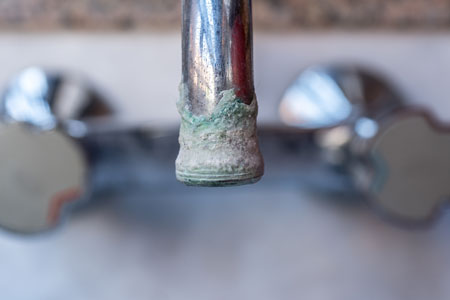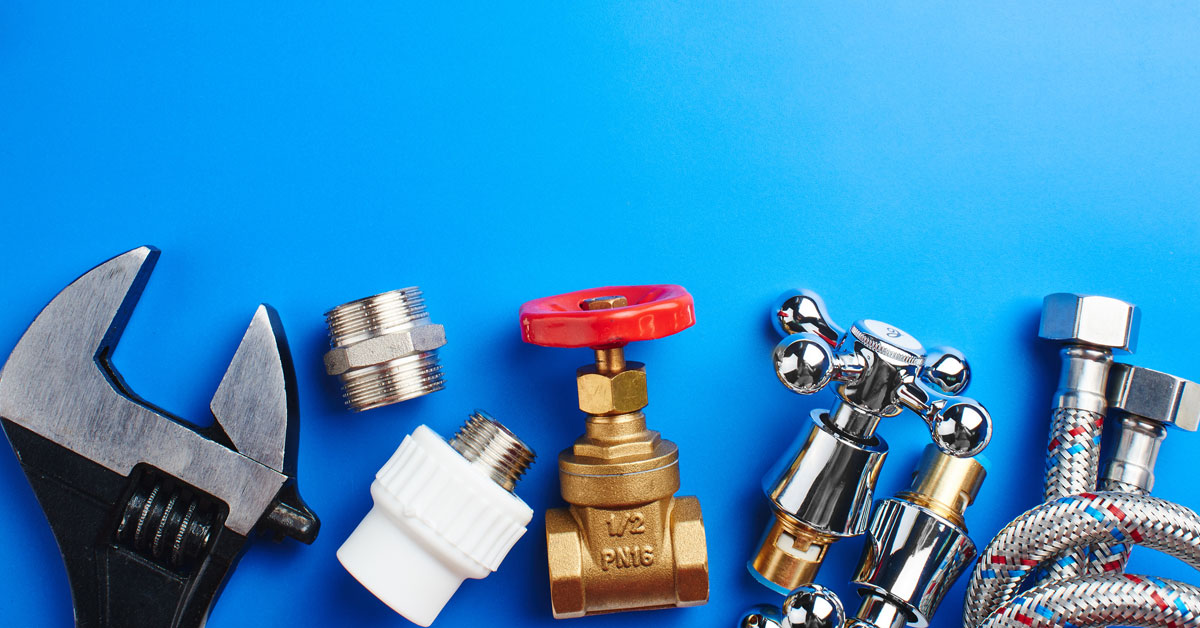Annual Plumbing Inspection Checklist and Tips for Homeowners
Every year around springtime, homeowners start compiling a list of things to clean and check around the home. However, pipes and plumbing fixtures often get forgotten or neglected, especially when they are hidden under the sink, in the basement, or behind appliances. To ensure these items don’t get overlooked, perform an annual or even bi-annual plumbing inspection to spot any issues before they turn into emergencies.
Room by Room Plumbing Checklist
With the number of pipes and plumbing fixtures running throughout a home, it can be hard to remember every little thing. To make the task simpler, we’ve created a room by room maintenance checklist:
Kitchen Plumbing
The kitchen should be on the top of your list to inspect because of the number of plumbing fixtures in the room and frequency of use.
Faucets
- Clean the aerator: The aerator is the small attachment that screws onto the end of a faucet. Over time, they accumulate build-up and can become clogged from mineral deposits. To clean it, you can use a simple mixture of water and soap or vinegar.
- Check for leaks: Faucet leaks can cause hundreds of gallons of water to go to waste and hike up your water bill. Inspect the handles and faucet spout for leaks when the water is turned on and off as well. Some leaks might easily be fixed by tightening some of the hardware. However, if you have a significant leak, or if any water is dripping out even after you’ve tightened all the fixtures, you should call a plumber to have it repaired.
Sink
- Drains: A slow draining sink might be a sign of a clog or blockage. Fill your sink with water and pay close attention as it drains. If the sink drains slowly or has gurgling, there could be a minor blockage. However, if the water takes a while to drain, there could be a more significant clog. Also, check under the sink for signs of any leaking from the pipes. Even if there isn’t a current leak, water stains, mildew, or warping and peeling could be signs that there is a leak that happens occasionally.
- Garbage Disposal: If your garbage disposal smells bad, it might just need a thorough cleaning. However, if your disposal won’t drain, doesn’t work, or continues having a foul smell even after cleaning, you will likely need to call to have it repaired.
Refrigerator
- Water line: If your fridge has an ice maker or a water dispenser, you should check the water line at the back of the refrigerator for visible signs of wear and tear.
- Water filter: Refrigerators with Icemakers and water dispensers typically have a filter. If the filter is not changed out regularly, it can become clogged and affect the flow of water.
Dishwasher
- Check for leaks: During or after running the dishwasher, check underneath to be sure that the supply line or hose is not leaking onto the floor.
- Check the drain: If the water is slow to drain or sits at the bottom of the dishwasher after you run a load, there could be a clog or a pinch in the discharge hose.
Bathroom Plumbing
Aside from the kitchen, the bathroom is one of the most used rooms in the home and is one of the most likely places for a plumbing issue to arise.
Faucets
- Clean aerators and showerheads: This task is the same as it is for the kitchen sinks. Just be sure to also check and clean the aerator on the faucet in the tub, as well as the showerhead.
- Check for leaks: Check that there is no water dripping or leaking from any of the faucets or handles. Showerheads and bathtub faucets are notorious for dripping. First, check that the handles don’t just need tightening before calling for repairs. If there is a consistent drip or leak after tightening, then something may need fixing.
Sink, Tub, and Shower Drains
- Hair clogs: Bathroom drains are prone to clogs from hair and product build-up. If water is backing up in your sink or tub/shower, you may have a simple clog from hair that needs to be removed. If your drains are still moving slowly after removing the hair, there may be a more significant clog farther down that needs to be removed by a professional.
- Pipe leaks: Check under the bathroom sink for any signs of a leak. If there are water stains, mildew, peeling, or warping, something might need to be tightened or repaired. If the walls in the bathroom are showing signs of water damage, there could be a leak in the piping hidden in the walls.
Toilet
- Clogs: A toilet that is slow to empty after flushing or that backs up regularly, might have a clog. If using the plunger does not fix the issue, you will need to call a plumber for repairs.
- Toilet running: A toilet that continues to run well after you have flushed, or that starts running randomly throughout the day could be a sign of a broken flapper valve. Open the back of the toilet and check that the chain is properly connected to the valve. If everything looks good and your toilet is still running, you will need to call for repairs.
- Leaks: If your toilet rocks when you sit on it, or if you notice any water leaking out from the bottom of the base, the wax ring that seals the toilet to the drain has likely worn out and needs replacing.
Laundry Room Plumbing
Don’t forget about the laundry room. Though it might not get used daily, the plumbing in your laundry room is just as important as the kitchen and bath.
Washing Machine
- Check the drain: If the pipe where the water from your washing machine drains is clogged, it can overflow onto the floor and cause water damage.
- Check the hose: Over time, the hose on your machine can dry out or start bulging. If you know the hose is old or can see visible signs of wear and tear, you should have it replaced as soon as possible before it bursts.
Basement Plumbing
If you have a basement that is unfinished or hardly gets used, it can be easy to forget about checking on what’s down there. Also, while the following things are typically found in the basement, they can sometimes be found in other areas depending on the layout of your home.
Water Heater
- Check for leaks: Inspect the pipes above the water heater for signs of leaking or damage, as well as leaking that could be occurring at the base.
- Flush sediment: Homeowners should flush their water heater tank every year or two to get rid of sediment build-up.
Sump Pump
- Check sump pump drain: If your sump pump isn’t working correctly, it can flood your basement and cause severe water damage. Test your sump pump by filling it with water and checking that it activates and empties.
Outdoor Plumbing
Though the fixtures on the outside of your home might seem more durable, they too need regular inspections and can cause issues and damage if not working correctly.
Hose Bibs
- Check for leaks: The faucets or hose bibs on the exterior of your home can wear down over time from inclement weather and use. Check for signs of damage or leaks that could be causing water damage in or around the foundation of the home.
PNW Plumbers
Whether you need an inspection for regular maintenance and upkeep, or something needs repairs, PNW Plumbers has got you covered. Our technicians are experienced and can handle anything from repairs and replacements to full installations. For quality, affordable service and reliable estimates, contact PNW Plumbers today!

